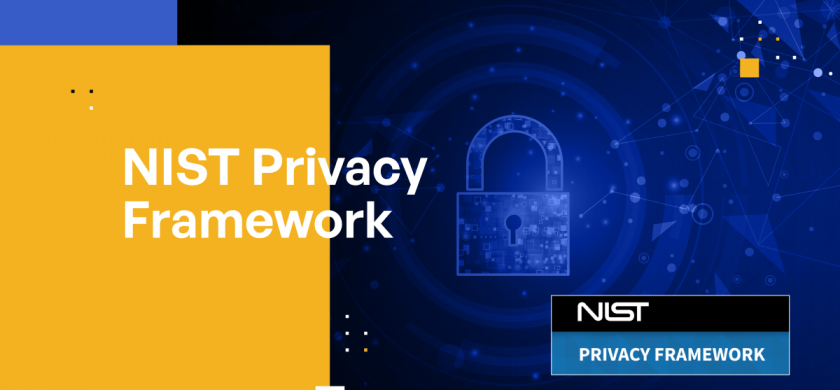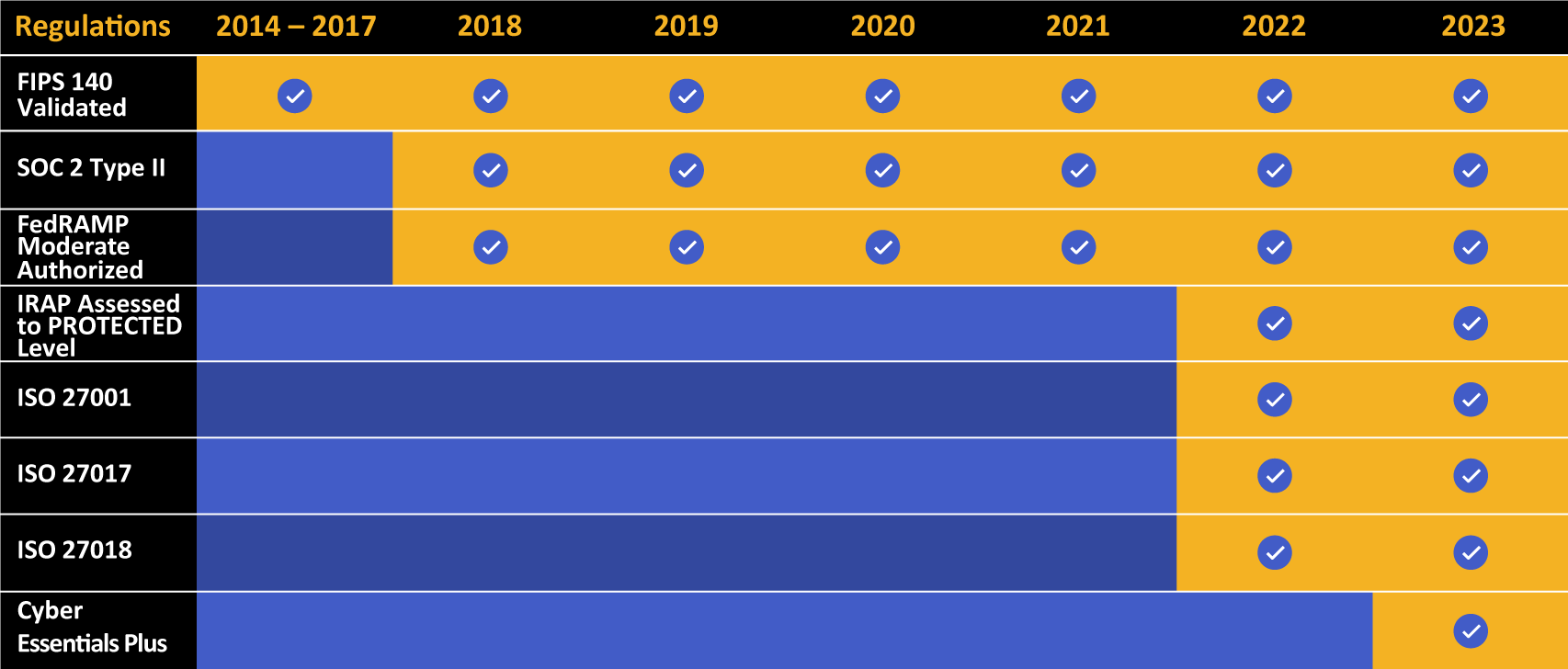
NIST Privacy Framework for Protecting Sensitive Data
In the digital age of today, data privacy has become an ever-increasing concern. With the rise of cyber threats, compliance regulations, and the increasing collection and utilization of data, organizations must strive to protect the privacy of their customers. In an effort to provide guidance on data privacy practices, the National Institute of Standards and Technology (NIST) has created the NIST Privacy Framework. This framework is intended to help organizations develop an effective approach to privacy protection and provide standardized guidance on how to protect sensitive data.
What Is the NIST Privacy Framework?
The NIST Privacy Framework is a framework that outlines processes, practices, and technical measures needed to protect user data. It is developed and maintained by NIST, an agency within the United States Department of Commerce that is devoted to advancing technology and technology standards. The NIST Privacy Framework is designed to provide organizations with the tools they need to protect user data and address privacy concerns. It covers topics such as data collection, data sharing, data security, and data privacy. The NIST Privacy Framework is meant to serve as a standard approach to privacy that is flexible enough to meet the needs of any organization.
Importance of Privacy in Today’s World
Data privacy is important in today’s world because it allows us to protect our personal information from being misused and abused. Data privacy ensures that our private information is kept secure and is only used for authorized purposes. It also helps protect us from identity theft and cybersecurity threats. Data privacy is especially important in a world of increasing technology, where data is widely shared and stored in digital form.
With data privacy, we can be assured that our information is being handled securely and responsibly. It gives us the opportunity to control how our data is used and shared, and allows us to make informed decisions about how our digital lives are managed. Data privacy is also essential for businesses, as it lets them protect their valuable customer data and uphold their reputation. Without data privacy, businesses would be in danger of having confidential information compromised, leading to lost revenue and trust. In today’s world, data privacy is key to protecting ourselves and our businesses.
Why Do Businesses Need to Consider the NIST Privacy Framework?
The NIST Privacy Framework serves as a comprehensive resource for organizations looking to develop an effective approach to data privacy. The framework provides organizations with a set of best practices and technical guidance on how to effectively manage and protect personal data. It is designed to be flexible, so that organizations can tailor their privacy practices to meet their specific needs. The framework is divided into four main components: organizational responsibility, data governance, risk management, and technical controls.
Organizational Responsibility
The organizational responsibility component of the NIST Privacy Framework focuses on the roles, responsibilities, and practices of organizations with respect to data privacy. It outlines the principles that organizations should follow when collecting, sharing, and storing personal data. It also provides guidance on how to properly manage data privacy and ensure compliance with relevant laws and regulations.
Data Governance
The data governance component of the framework outlines how organizations should collect, manage, and protect personal data. It discusses how organizations should classify data and ensure that it is properly labeled and stored. The component also provides guidance on how to assess and respond to risks associated with data collection and usage.
Risk Management
The risk management component of the framework focuses on identifying, assessing, and mitigating risks associated with the collection and use of personal data. It outlines processes and procedures that organizations should follow in order to protect data from unauthorized access and misuse.
Technical Controls
The technical controls component of the framework provides guidance on how organizations should secure personal data and protect it from unauthorized access. It outlines the measures organizations should take to ensure that data is properly encrypted and stored.

Kiteworks touts a long list of compliance and certification achievements.
Comparison With Other Privacy Frameworks
The NIST Privacy Framework is similar in many ways to other privacy frameworks, such as the EU’s General Data Protection Regulation (GDPR) and the California Consumer Privacy Act (CCPA). These privacy frameworks share many of the same principles and practices, but the NIST Privacy Framework places greater emphasis on technical controls. This is due to its focus on data security and its emphasis on encryption and secure storage of data.
How Does the NIST Privacy Framework Work?
The NIST Privacy Framework is based on three key principles:
Identify
Organizations must identify and document the privacy risks associated with their activities and processes.
Protect
Organizations must develop, implement, and document measures to adequately protect the privacy of individuals.
Monitor and Evaluate
Organizations must monitor, audit, and evaluate privacy protections in order to detect, respond to, and mitigate any privacy risks. Organizations can use the framework to develop, implement, and maintain an effective privacy program. The framework also provides guidance on how to create, maintain, and strengthen privacy policies and procedures related to privacy-invasive activities.
Steps Involved in Implementing the Framework
The NIST Privacy Framework is designed to be implemented in a step-by-step process. Organizations should begin by conducting a privacy risk assessment and developing a personalized privacy program. This program should include processes and procedures for protecting personal data, as well as technical controls for securing it. Once the program is in place, organizations should monitor and review their privacy practices and make any necessary adjustments.
Advantages of Using the Framework
The NIST Privacy Framework provides organizations with a set of best practices and technical guidance for protecting personally identifiable information (PII). It is designed to be flexible and customizable, so organizations can tailor their privacy practices to meet their specific needs. By using the framework, organizations can ensure that their data privacy practices are compliant with industry standards and regulations.
Use Cases of the NIST Privacy Framework
The NIST Privacy Framework can be used by organizations of all sizes and in all industries. It can be used to ensure compliance with data privacy laws. It can also be used to help organizations develop secure, privacy-protective data practices. The framework can be used to audit and review an organization’s privacy practices in order to ensure that they are adequate.
How Do Businesses Stand to Benefit From the NIST Privacy Framework?
Some of the benefits that organizations looking to develop an effective approach to data privacy using NIST Privacy Framework include:
Improved Privacy Protection
The NIST Privacy Framework provides organizations with the tools they need to ensure that their data privacy practices are secure and compliant. By using the NIST Privacy Framework, organizations can ensure that their data is properly protected and that their customers’ personal information is kept safe.
Better Alignment With Privacy Laws and Regulations
The NIST Privacy Framework is designed to help organizations comply with data privacy laws and regulations. By using the framework, organizations can ensure that their data privacy practices are in line with industry standards and regulations.
Increased Transparency and Accountability
The NIST Privacy Framework provides organizations with the tools to increase transparency and accountability with respect to their data privacy practices. By using the framework, organizations can ensure that they are being open and honest about their data collection and usage practices.
Challenges and Limitations of the NIST Privacy Framework
The NIST Privacy Framework provides organizations with a comprehensive and detailed approach for protecting their customers’ data, but there are a number of challenges and limitations associated with its use. Some of these include:
Complexity of the Framework
One of the main challenges with using the NIST Privacy Framework is its complexity. The framework is comprehensive and detailed, and it can be difficult to implement in its entirety. The framework is designed to be flexible and customizable, which can make it difficult to understand and apply.
Resource Constraints
Implementing the NIST Privacy Framework requires additional resources and expertise. Organizations must ensure that they have the necessary personnel, tools, and technology in place in order to successfully implement the framework. Organizations must ensure that they have the resources to monitor and review their privacy practices on an ongoing basis.
Lack of Adoption by Organizations
Another challenge with using the NIST Privacy Framework is the lack of adoption by organizations. The framework is comprehensive and detailed, and it can be difficult for organizations to understand and implement. Some organizations may not have the resources or personnel to adequately implement the framework.
Kiteworks Private Content Network and the NIST Privacy Framework
The Kiteworks Private Content Network (PCN) unifies, tracks, controls, and secures sensitive content communications across various communication channels—email, file sharing, managed file transfer, web forms, and application programming interfaces (APIs). The Kiteworks PCN relies on a hardened virtual appliance that provides multiple security layers that dramatically reduce risk. Internal layers of protection in the Kiteworks PCN include embedded artificial intelligence (AI)-based anomaly detection, advanced intrusion detection and alerts, and zero-day threat blocking.
Because Kiteworks delivers comprehensive governance tracking and controls, organizations are able to demonstrate compliance with data privacy standards like the NIST Privacy Framework. Kiteworks provides a secure environment for the storage, sharing, and collaboration of sensitive file and email data, including end-to-end encryption and access controls.
For more on the Kiteworks Private Content Network and NIST Privacy Framework, schedule a custom demo today.
Additional Resources
- Blog Post What Is the NIST Cybersecurity Framework (CSF)?
- Blog Post Protecting Business With the NIST Cybersecurity Framework
- Report Benchmark Your Security and Compliance Risk
- Webinar How Automated Encryption Delivers Improved Privacy Protection and Compliance
- Blog Post What Are Data Compliance Standards?